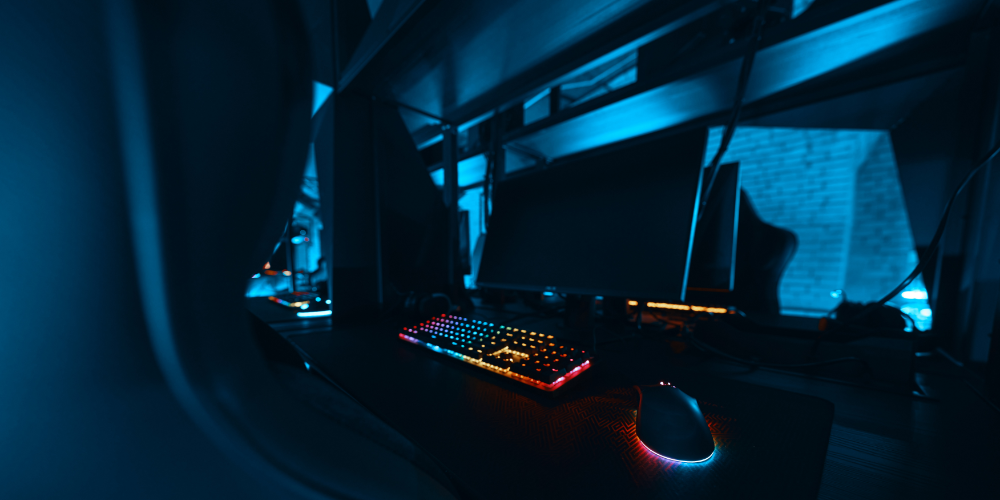Unity for Beginners: Crafting Your First 2D Platformer Game
- 2024-03-07 14:25

Dreaming of creating your own video game but not sure where to start? Unity, a powerful game development platform, could be your ticket into the gaming world. Renowned for its flexibility and ease of use, Unity is the perfect tool for beginners aspiring to bring their visions to life. In this guide, we'll walk you through the process of creating a simple 2D platformer game, covering everything from setting up Unity to programming game mechanics. Get ready to embark on a journey of game development!
Understanding Unity and Its Interface
Before diving into game development, it’s crucial to familiarize yourself with the Unity interface and its core concepts. Unity's workspace is divided into several panels, each serving a specific purpose like scene view, game view, project tab, etc. Spend some time exploring these areas:
- Scene View: This is where you'll spend most of your time, designing levels and placing game objects.
- Game View: Here, you can preview your game as it would appear to players.
- Hierarchy: Displays all the objects in the current scene, allowing easy navigation and organization.
- Project: Your game's files and assets live here. Organizing this area well will save you time in the long run.
- Inspector: View and edit the properties of the selected game object. Extremely useful for fine-tuning behaviour and appearance.
Setting Up Your First Project
Now, it’s time to set up your first Unity project. Launch Unity Hub and select 'New Project'. Choose the 2D template as we're focusing on a 2D platformer. Name your project something memorable. Unity will then set up the necessary environment for you to start building your game.
Creating the Game World

With your project ready, let’s begin crafting the game world. Here, you'll design levels, incorporating platforms, backgrounds, and any environmental elements your game needs. Unity's SpriteRenderer component will be pivotal here, enabling you to use 2D images (sprites) as objects in your scene. For starters, focus on creating a simple level layout with platforms of various sizes and positions to explore the dynamics of movement and jumping.
Adding Platforms
To add platforms, you'll need sprites. You can find free sprite assets online or create your own using graphic software. Once you have your sprites, import them into Unity by dragging them into the Project tab. Create a new GameObject in the scene, add a SpriteRenderer component, and select your platform sprite. Use the Inspector to adjust the size and position as needed.
Setting up Physics
For your player character to interact with platforms, Unity's physics system comes into play. Add a Rigidbody2D component to your player object to enable physics-based movement. Also, add Collider2D components to both the player and platforms to detect collisions, making sure the player can stand and move on the platforms.
Creating a Player Character
A game isn’t complete without a protagonist. It's time to introduce a player character into your game:
- Create a new GameObject for your character.
- Add a SpriteRenderer component and assign a character sprite.
- Add a Rigidbody2D component to apply physics.
- Use a Collider2D so your character can interact with the game world.
Once your character is set up, you'll need to animate it. Unity's Animator component and Animation window make creating and managing animations relatively straightforward. At this stage, even simple animations like walking, jumping, and idle can significantly enhance your game.
Programming Character Movement

With your character designed and animated, the next step is to breathe life into them through code. Unity uses C# for scripting, offering a powerful yet accessible programming language for game development.
Creating the Movement Script
Create a new C# script in Unity and name it PlayerMovement. Open the script in your code editor, where you’ll define variables for movement speed and jump force. In the Update method, use input from the keyboard to apply horizontal movement. Use the FixedUpdate method for physics-related codes, like applying the jump force.
Handling Input
Unity simplifies input management, allowing you to detect when the player presses keys for movement and jumping. Use the Input.GetAxis method to get horizontal movement and Input.GetKeyDown for jump actions. Make sure to balance the input sensitivity and movement speed for a smooth gaming experience.
Applying Movement and Jump
To move the player, modify the Rigidbody2D velocity based on input. For jumping, check if the player is grounded and apply a vertical force. It’s crucial to fine-tune the force applied for jumping to ensure the game feels right.
Adding Enemies and Obstacles
With the basic gameplay mechanics in place, it's time to introduce challenges. Enemies and obstacles add excitement and complexity, compelling gamers to engage more deeply with game.

- Creating Obstacles: Use sprites to design various obstacles. Place them in your level and add Collider2D components to interact with the player.
- Designing Enemies: Similar to the player character, enemies will need sprites, animations, and scripts to define their behavior. Simple behaviors include patrolling an area or chasing the player when in range.
Polishing and Testing Your Game
With your game’s core elements in place, it’s time to test and polish. Play through your game, looking for bugs and assessing the overall feel. Adjust gameplay mechanics as needed, and consider adding more levels or features based on your testing.
- Debugging: Use Unity’s Console window to catch and fix errors. Ensuring your game runs smoothly across various devices is crucial.
- Adding Sound Effects and Music: Audio significantly enhances the gaming experience. Source or create suitable soundtracks and effects for actions like jumping landing, or enemy encounters.
- Optimizing Your Game: As your game grows, keep an eye on performance. Use Unity’s Profiler to identify bottlenecks and optimize your game accordingly.
Conclusion and Next Steps
Congratulations! You’ve taken your first steps into the world of game development with Unity. By now, you should have a basic but playable 2D platformer game. However, your journey doesn’t end here. Game development is a continuous learning process. Experiment with new ideas, incorporate advanced mechanics, and most importantly, keep coding. Consider joining Unity communities online to share your work and learn from others. The world of game development is vast and exciting—your adventure has just begun!


